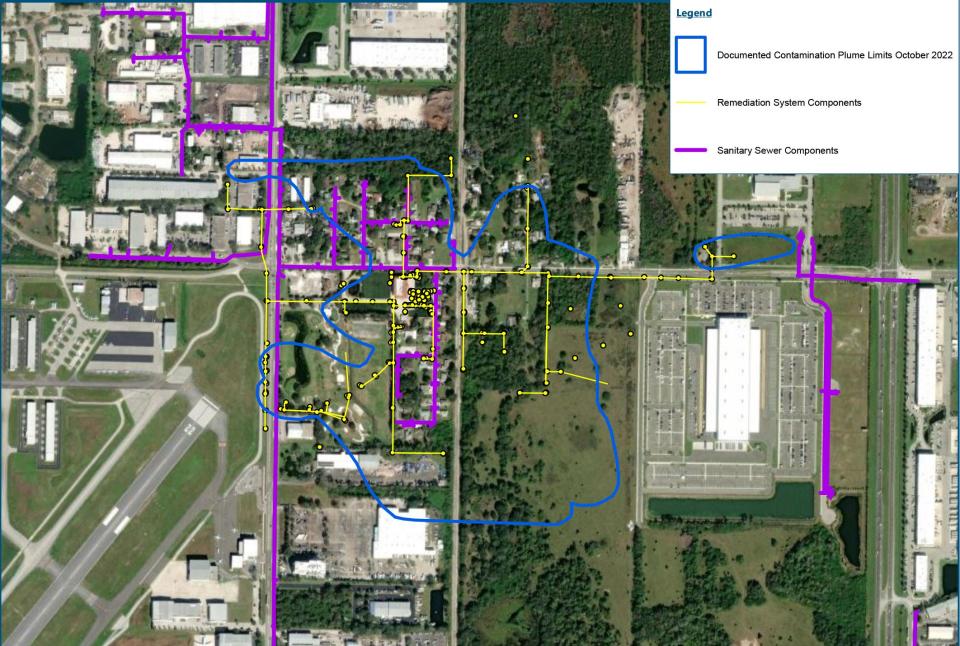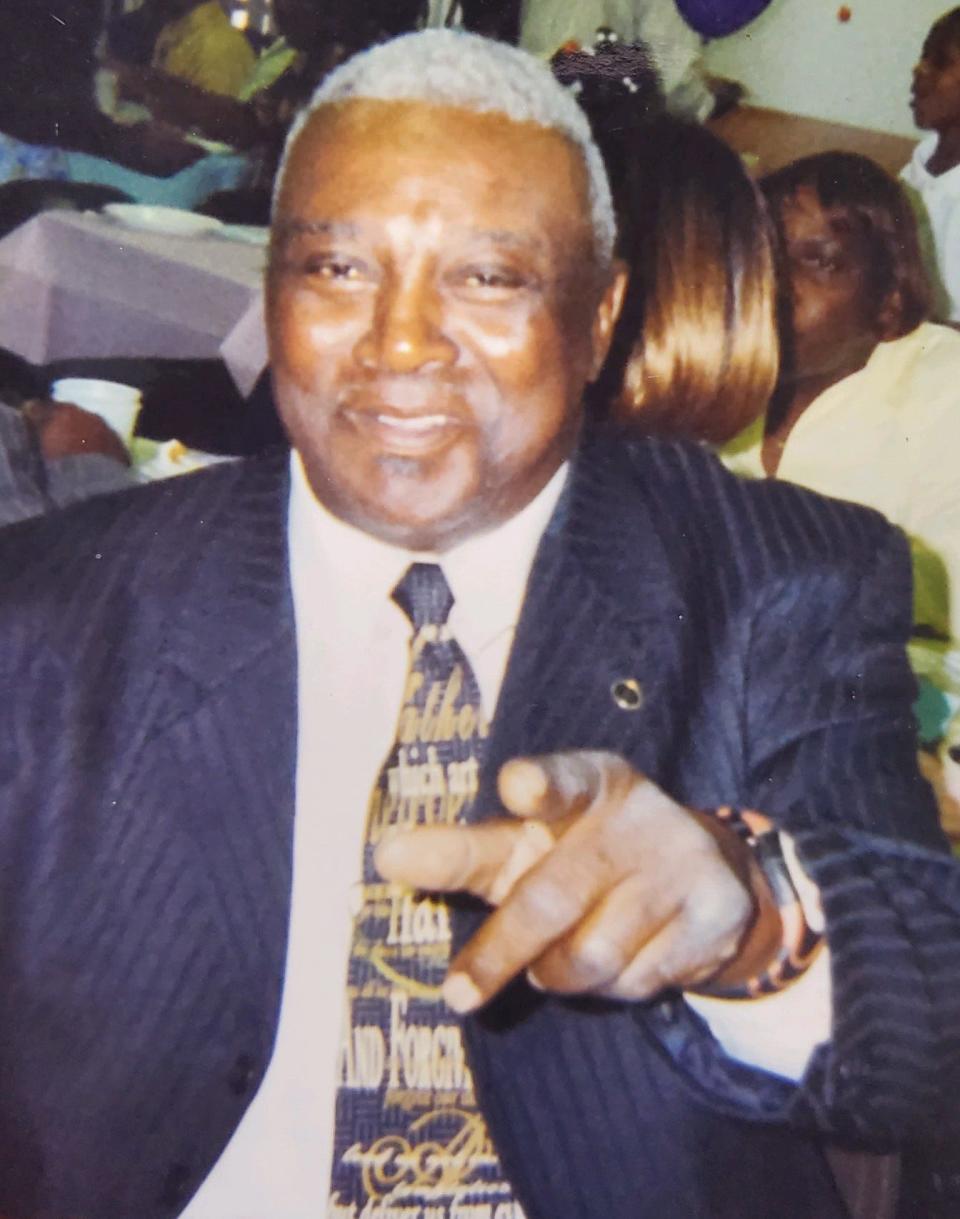Decades of contamination continues to plague underserved Tallevast community

Beatrice Ziegler's husband Charlie died in 2017 from a rare disease called Berylliosis, which he contracted during decades of work as a janitor at the American Beryllium Co. across the street from their home in Tallevast — a major contamination cleanup site in Manatee County.
Ziegler thinks about him every night, and about how the rare disease forced him to depend on a portable oxygen concentrator for years before his death. She has the disease too, as does her brother Leroy Mazon. They never worked at the company but washed all of their clothes together.
"He was a good, good man," Ziegler said. "A lot of the time he would be sick, but he would put on his best on the outside because of how we felt towards each other ... He caught the devil."
From the archive: How long must Tallevast residents suffer with pollution?
Also: Tallevast residents are still forced to live with toxic pollution
The family was among many in the community who did not know they were living a stone's throw away from a major contamination site, and in many instances, working for the company responsible. The property is now owned by the Lockheed Martin Corp., and the site remains under remediation decades after operations ceased and the contamination was discovered.
Locals continue to monitor cleanup efforts and advocate for sewer and road infrastructure that has never been installed in portions of the community over concern of contamination.
Longtime residents now fear a lack of infrastructure could be squeezing residents out altogether as industrial development continues to surround the community, which is predominantly comprised of minorities.
"There is no trade-off for spending the money here if their vision for the future is not all of these older single-family homes," said attorney Jeanne Zokovitch Paben, who represents the Tallevast community-based nonprofit Family Oriented Community United Strong. "If the contamination does present challenges, they should explain to us why it didn't present challenges for that infrastructure for new government and industrial buildings?"
"When Lockheed was forced to bring public water to the community, it happened," she said. "When Lockheed was forced to build pipes and infrastructure for cleanup, it happened. When all of those new industrial and government buildings were required to put infrastructure in, it happened."
American Beryllium Co.

The Loral Corp. manufactured ultraprecision beryllium machine parts at the American Beryllium Co. on Tallevast Road from 1961 to 1996, including components for nuclear warheads and the Hubble telescope.
For many, the company first presented a major new opportunity for employment. Today, many of those residents have become engrossed in years-long battles to address environmental hazards and health concerns caused by the company.
Although the exact source of contamination is unknown, leaks and discharges associated with on-site wastewater treatment systems allowed contaminants, primarily chlorinated solvents, to enter the soil and groundwater.
The property was acquired by Lockheed Martin in 1996 as part of its purchase of Loral’s defense electronics business, and operations ceased. The corporation has assumed responsibility for the assessment and cleanup of environmental impacts.
It wasn't until 2000 that Lockheed Martin discovered the groundwater beneath the property was contaminated by a variety of dangerous pollutants.

Local community leader Laura Ward was among the first to learn about contamination in Tallevast in 2003 when she looked out her window and saw unidentified men installing a monitoring well on her property.
Ward is one of the leaders of FOCUS, which was established in the late 1990s to address housing, employment, community services, and redevelopment needs in the community. Upon learning of the contamination, the nonprofit turned its attention toward uncovering details about Lockheed Martin's cleanup operations.
Many Tallevast households were connected to public water supply lines around 1985, but residences located along 16th, 18th, and 19th streets, as well as parts of Tallevast Road, continued to use water from private wells for household uses and irrigation. When tested in 2004, many wells were contaminated.
Ward was among several residents who filed tort lawsuits against Lockheed Martin over a failure to notify them about the discovery of the contamination. Her lawsuit, filed in 2005, was settled for an undisclosed amount in 2011.
"It opened the doors for us to request that we know what may be in those wells, once they started to say there had been spills from the plant," Ward said. "We had no idea what those chemicals were, or that we were ingesting those chemicals for all of those years. People cooked with that water because they had wells. They made the baby formula. Wash clothes. Did everything with it. So we were really and truly exposed to everything that was leaking from the plant."
She believes monitoring wells were strategically placed in a way to minimize the company's liability to residents, resulting in what she believes is insufficient analysis of areas affected by contamination.
When reached for comment, Lockheed Martin said it is proceeding forward with cleanup efforts as approved by the Florida Department of Environmental Protection.
"We have a longstanding commitment to conducting groundwater remediation at the former American Beryllium Co. facility, in accordance with all applicable federal and state requirements," the company stated. "We remain committed to meeting all applicable public health and environmental standards. All remediation activities are subject to the review and approval of the Florida Department of Environmental Protection."
Infrastructure needs
In 2004, Manatee County installed temporary above-ground water lines, often referred to as "blue lines" that ran across resident's yards until permanent water lines were buried in 2008.
Sewer lines for homes that still use septic tanks and new roads have been promised to residents but never built.
"Tallevast is really tough," Manatee County Chairman Mike Rahn said. He represents District 2, which includes the Tallevast community.
He said the county has not been able to install sewer lines to portions of the community that still use septic tanks, despite promises made by previous county officials over the years and regardless of their proximity to the new Amazon distribution center, largely because of contamination and right-of-way issues.
"It has been a disenfranchised community, but I believe some promises were made by my predecessor that just couldn't be fulfilled," Rahn said. "I feel bad for those folks. That plant that was there just destroyed that community. It's tough because they are getting squeezed by commercial (development) too. You can see the close proximity of where Amazon was built."
Ward's husband, Billy Ward, owns property east of the railroad tracks. He lives about as close as any resident in the community to the new Amazon facility, which opened in late 2021. He questions why infrastructure cannot be extended to the remainder of the community despite its proximity to new industrial and county development, all of which are under municipal sewer services.
"I don't want to say it," Ward said. "I grew up out here, and I remember when I was bused at 6 years or 7 years of age to Bradenton to school when we had a school only a mile and a halfway. But I had to go all the way to Bradenton to go to school. I grew up when I had to sit at the back of the bus, and if I was occupying a seat that was in front of that line, I was asked to move. I don't want to make it a racial thing, but it's there."
"They don't want to give you a fair price."
Health concerns

Ziegler remembers the first day she received word that her family's health was compromised by operations at the American Beryllium Co.
There was a knock at the door. When she opened it, a nurse from Bradenton delivered the results of preliminary testing conducted by the county health department in 2005 to identify residents positive for Beryllium sensitivity, which indicates the body's immune system has been activated in response to beryllium exposure.
She was alerted that she and her brother Leroy needed further testing to determine if they had been afflicted by a rare disease called Berylliosis, a form of metal poisoning caused by inhaling beryllium dust or implantation on the skin.
Ziegler struggled to find medical care and said she was rejected by a physician who served company employees. Eventually, she traveled to Tennessee for medical attention. There, she learned that her family had the disease.
"He really didn't know at the time that he was sick," Ziegler said of her late husband. "Nobody at the plant would tell him that. We had to find that out for ourselves, and the only way we could find out was to continue to go to the doctor."
In 2007, the three family members sued Lockheed Martin, and the case was settled in 2011 for an undisclosed amount.
Another lawsuit, also filed in 2007 by four community members, sought class-action status for employees, families of employees, and residents of the community. They sought payment for medical monitoring tests for conditions related to beryllium exposure, including berylliosis. The class-action status was denied in 2010 and upheld on appeal.
Charlie could not breathe without the assistance of an apparatus for many years before his death in 2017. On the night he died, Charlie called Ziegler and their daughter Janet to his bedside. He knew it was his time.
"He said 'the lord is calling me, and I'm going. I'm tired of suffering,'" Ziegler said. "I was on one side of the bed, he was on the other side, and my Janet was in a big chair next to the bed. She said 'Daddy, just get you some rest you'll be alright in the morning.' He said, 'I know it because I'm going to leave.'"
"He laid right here in my arms and died. Things like that stay with you"
This article originally appeared on Sarasota Herald-Tribune: Decades of contamination continues to plague the Tallevast community

